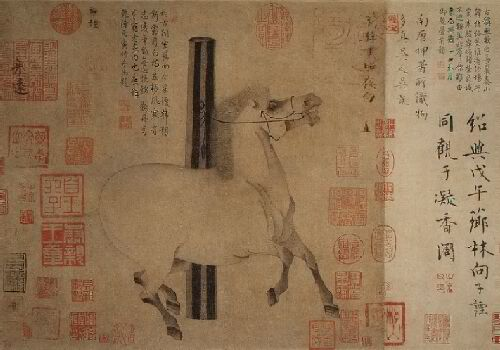The Silk Road: How Ancient Trade Routes Shaped the Modern World
The Enduring Legacy of the Silk Road: A Bridge Between East and West

Imagine a vast network of ancient trade routes that did more than just transport goods; it truly connected civilizations and reshaped the world. For centuries, the legendary Silk Road wasn't a single path, but a complex web spanning over 4,000 miles, linking the vibrant cultures of the East and West. While silk was a prominent commodity, this historic network fostered an unparalleled exchange of goods, innovative ideas, diverse religions, and rich cultures. This article delves into the profound history, lasting impact, and enduring legacy of the Silk Road, exploring its evolution, key traded items, remarkable cultural exchange, eventual decline, and its modern resurgence in connecting global regions.
The Silk Road's Origins and Development: From Han Dynasty to Tang Dynasty Trade

The historical roots of the Silk Road can be traced back to China's Han Dynasty (206 BCE – 220 CE). Emperor Wu of Han dispatched Zhang Qian as an envoy, aiming to form alliances against the nomadic Xiongnu tribes. Although the military objective wasn't fully achieved, Zhang Qian's journeys opened crucial trade routes to Central Asia. This marked the beginning of significant exchanges, with valuable goods like silk, tea, and porcelain moving from the East, and commodities such as horses, wool, linen, and precious metals traveling from the West.
Initially, trade along these ancient routes was sporadic and perilous, often relying on nomadic intermediaries. However, with the expansion of the powerful Roman Empire and its growing demand for luxury goods, the Silk Road truly began to flourish. The Kushan Empire played a pivotal role in facilitating both trade and cultural interaction by controlling a vital section of the route. Later, the Tang Dynasty (618-907 CE) ushered in a golden age for the Silk Road. Increased political stability and a cosmopolitan atmosphere in Chinese cities like Chang'an (modern-day Xi'an) transformed them into vibrant hubs for merchants and travelers from across the globe, enhancing this intricate network of ancient trade routes.
Beyond Silk: The Diverse Exchange of Goods and Technologies on the Silk Road
While the term "Silk Road" immediately brings to mind luxurious silk, this extensive network of ancient trade routes facilitated a remarkably diverse array of commodities. From China, travelers brought tea, exotic spices (like cinnamon and ginger), jade, and even gunpowder. Central Asia contributed magnificent horses, intricate carpets, and various dried fruits. The West, in turn, offered wool, linen, shimmering glass, precious amber, and valuable stones. This bustling exchange wasn't confined solely to luxury items; essential goods such as agricultural products and livestock also moved consistently along these crucial routes.
Crucially, the Silk Road served as a conduit for more than just material wealth; it was a highway for knowledge and technological transfer. Innovations like papermaking, printing, and the compass, originating in China, spread westward, profoundly revolutionizing communication and navigation in Europe. Similarly, Western advancements in fields such as astronomy, mathematics, and medicine found their way eastward, fostering a mutual growth of human understanding and capability.
Cultural and Religious Diffusion Along the Silk Road: A Meeting of Ancient Civilizations
Perhaps the most profound and lasting impact of the Silk Road was the extensive exchange of ideas, philosophies, and religions. Buddhism, which originated in India, spread eastward along the Silk Road, eventually becoming a major religion across China, Korea, and Japan. Along these routes, monasteries and various religious centers emerged, serving as vital hubs for learning and significant cultural exchange.
Beyond Buddhism, other significant faiths like Nestorian Christianity, Manichaeism, and Islam also traveled along the Silk Road, establishing communities and profoundly influencing local beliefs and customs. Artistic styles often blended, leading to unique syncretic forms, such as Gandharan art found in present-day Pakistan and Afghanistan, which beautifully combined Greek and Buddhist artistic traditions. Even languages intertwined, with Sogdian becoming a common lingua franca across much of the expansive route.
The Silk Road's Decline and Enduring Legacy: From Maritime Routes to Modern Connectivity
The prominence of the Silk Road began to wane in the 15th century, largely due to the emergence and development of new, more efficient maritime trade routes. European powers, keen to establish direct access to lucrative Asian markets, pioneered sea routes that were not only faster and cheaper but also less vulnerable to political instability on land. The fragmentation of the Mongol Empire, which had previously provided a crucial degree of security and stability along the overland routes, also significantly contributed to this decline.
Despite its eventual reduction in primary trade, the legacy of the Silk Road powerfully endures. It successfully fostered global interconnectedness, facilitated profound cultural understanding, and laid fundamental groundwork for the globalization we recognize today. In the modern era, China's ambitious Belt and Road Initiative (BRI) aims to revitalize the spirit of the Silk Road, involving massive investments in infrastructure projects across Asia, Africa, and Europe. While the BRI is a contemporary undertaking with its own distinct complexities, it represents a conscious and significant effort to reconnect the diverse regions once intricately linked by this truly historic trade network.
Conclusion

The Silk Road was far more than a collection of trade routes; it was a dynamic catalyst for groundbreaking cultural exchange, significant technological innovation, and widespread religious diffusion. Its transformative impact on the ancient civilizations it connected is truly immeasurable, laying the groundwork for global interaction. By studying its rich history, we gain a deeper appreciation for the profound interconnectedness of our world and the enduring power of cross-cultural collaboration. The Silk Road remains a powerful testament to how interaction and cooperation between diverse cultures are absolutely essential for human progress and global understanding.
